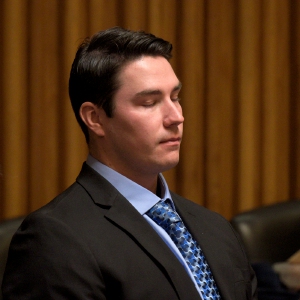Democrats impatient over slow rollout of governor’s education plan as fault lines develop
| Published: 02-17-2025 3:00 PM |
Gov. Phil Scott’s education reform ideas have absorbed much of the Legislature’s attention, but lawmakers are growing impatient with his administration for not yet introducing a bill with all the details.
And as Education Secretary Zoie Saunders and other top officials have released specifics of the plan piece by piece, Democrats — and the state’s teachers union — have rejected the administration’s proposal to create a school choice lottery in every newly drawn district statewide, straining collaboration.
“It’s really hard for a legislator or a committee to react to something that doesn’t have the bill language,” Sen. Scott Beck, R-Caledonia, the Senate minority leader, said in an interview. “It just never goes as fast as anybody wants it to.”
Some lawmakers have called Scott’s plan, dubbed his “education transformation proposal,” the largest reform package in recent memory. The plan addresses school governance by consolidating Vermont’s more than 100 school districts into just five. And it proposes using a foundation formula to pay for education. That change would give the state much more power over school spending, and Scott’s team has said it could save as much as $180 million per year if districts choose not to raise more than the formula provides. How exactly those savings are achieved — through fewer administrators, fewer teachers or fewer schools — lawmakers have said remains murky.
Calls for grand change in education follow last year’s double-digit spike in education property tax rates, which led voters to reject a historic proportion of school budgets and oust many Democrats from the House and Senate. This year, state economists predict property taxes to rise about 6%, though the governor has called for using $70 million in one-time general fund money to buy down that increase.
Scott’s education package has become the year’s most high profile piece of legislation, despite its gradual rollout. Major questions remain, like which schools students would attend, and which schools, if any, will be closed as part of the shift. Without an actual bill in front of lawmakers, conversations remain hypothetical.
“We have heard in testimony that there are still a lot of gaps that need to be filled in,” Rep. Peter Conlon, D-Cornwall, chair of the House Education Committee, said in an interview.
In particular, he expressed concern that the Agency of Education hasn’t figured out how school construction fits into the plan. Vermont has been without state aid for school construction for more than 15 years, and the state has the second oldest school buildings in the nation. A future system with fewer schools may require new buildings, lawmakers have said.
Article continues after...
Yesterday's Most Read Articles
“We have been awaiting language probably far longer than we can, because the clock is ticking. We’ve got legislative deadlines to meet,” Conlon said.
While a lack of specifics is causing concern, for some, the details themselves are more concerning.
House and Senate Democrats panned Scott’s proposed school choice lottery, saying the idea could erode the public school system. But Scott has contested that assessment as inaccurate.
Senate President Pro Tempore Phil Baruth, D/P-Chittenden Central, said that while voters no doubt want education transformation that addresses property taxes, “What Vermonters did not demand was an expansion of school choice in our state.” He warned that the issue of choice threatened to “sink” the reform package.
The critical comments from lawmakers followed similar rejections from the Vermont School Boards Association and Vermont’s teachers union, the Vermont-NEA, which called the expansion of a choice a “non starter.”
In Vermont’s current system, many towns offer school choice if their local school districts do not operate public schools for all or certain grades, sometimes offering limited options and other times allowing choice of any approved school.
Scott put out a message of his own following the teachers union’s clear opposition.
“Defenders of the current system — which has declining test scores, massive annual property tax increases and pays teachers unequally — have misleadingly referred to this proposal as a ‘voucher system.’ They are wrong,” Scott’s office said in a press release.
The statement went on to say the governor’s proposal “eliminates the flow of public dollars to private schools outside of the state and country,” and assumes that an existing moratorium on private schools approved to receive public money would remain in effect.
This week, amid conflict over school choice, Scott’s team did unveil new details about how the administration plans to compensate for unequal property wealth between districts, while still allowing each district in the new system the ability to raise more money than the foundation formula provides. The measure is also an effort to address legal requirements to provide equal educational opportunities.
Districts with less-than-average property wealth would receive a set percentage of state support to supplement additional spending approved by the district. For example, in current year modeling, the northeast regional district would receive about 28% in state matching aid for additional funding over the foundation amount, and the southwest district would receive 7.5%. The three other districts would not receive state support for additional spending.






 Upper Valley businesses feel the sting of rising cocoa prices
Upper Valley businesses feel the sting of rising cocoa prices New Hampshire House passes slimmed-down budget, as Ayotte vows to restore some cuts
New Hampshire House passes slimmed-down budget, as Ayotte vows to restore some cuts Board schedules revote on bond for Bethel and Royalton schools
Board schedules revote on bond for Bethel and Royalton schools Prosecutors seek prison term of at least 30 years for man convicted at Dartmouth rape trial
Prosecutors seek prison term of at least 30 years for man convicted at Dartmouth rape trial
